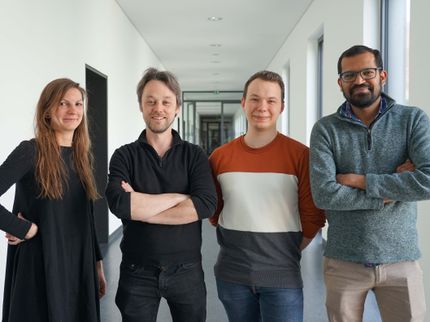Discovery of how HIV hedges its bets opens the door to new therapies
A stem cell is one with infinite possibilities. So, for decades, scientists have puzzled over how the cell chooses to keep being a stem cell and continue dividing, or specialize into a specific cell type, like a heart or brain cell.
The same type of decision is made by HIV. When the virus infects a cell, it can either turn on and start multiplying, or turn off so it can hide in the cell until a later date.
"Biology can hedge its bets in a similar way to how you might diversify financial investments," explained Leor S. Weinberger, PhD, the William and Ute Bowes Distinguished Professor and director of the Center for Cell Circuitry at the Gladstone Institutes. "Diversifying investments by placing some funds in high-risk, high-yield stocks and others in low-risk, low-yield savings accounts helps protect against volatility in the market. Similarly, HIV covers its bases in a volatile environment by generating both active and dormant infections."
But if HIV is randomly switching between these two fates, how does it ever commit to remaining in one state? Weinberger's laboratory has now answered this longstanding question and potentially uncovered how biological systems make such decisions. Their findings are published today in the prominent scientific journal Cell.
The Virus Rigs the System to Its Advantage
HIV benefits from maintaining both an active state and a dormant, or latent, state.
The active state allows the virus to spread and infect more cells, whereas virus in the latent state can survive in hiding for long periods of time. While the active virus can be killed by antiviral drugs, latent virus lies in wait and can rapidly reactivate when drugs are stopped. Because the latent virus cannot be treated by current therapies, it represents the main obstacle to curing HIV.
Weinberger's team previously showed that HIV generates these two categories of infection by exploiting random fluctuations in gene expression.
"Even when two cells are genetically identical, one can produce a large amount of a protein, while the other can produce a much smaller amount," said Maike Hansen, postdoctoral scholar in Weinberger's laboratory and one of the first authors of the study. "These random fluctuations, called noise, can determine the fate and function of the cell. HIV uses noise to create both active and latent virus."
To express its genes, HIV uses a mechanism known as alternative splicing, which essentially allows the virus to cut up parts of its genome and arrange them in different combinations. By observing individual cells over time, the researchers discovered that HIV hijacks an exotic form of splicing to tune random noise. This tuning of noise dictates whether the virus will remain stably active or latent.
"We found that HIV uses a particularly inefficient form of splicing to control noise," added Hansen. "Surprisingly, if it worked efficiently, this mechanism would produce much less active virus. But, by seemingly wasting energy through an inefficient process, HIV can actually better control its decision to remain active."
Weinberger's team used a combination of mathematical modeling, imaging, and genetics to show that this type of alternative splicing occurs after transcription, during which genetic information in DNA is copied into a molecule called RNA. Previously, scientists thought that splicing occurred at the same time as transcription. This study represents the first function for post-transcriptional splicing.
Unexplored Targets for HIV Cure Strategies
The study demonstrates that HIV conserved a highly inefficient process on purpose, and by correcting it, scientists could significantly harm the virus. These findings could reveal unexplored targets for the development of novel HIV cure strategies.
"The splicing circuit may give us an opportunity to therapeutically attack the virus in a different way," said Weinberger, who is also a professor of pharmaceutical chemistry at UC San Francisco. "For a while, there have been proposals to 'lock' HIV in latency and 'block' it from reactivating, but how to do this wasn't clear."
Researchers may now be able to continually force HIV back into latency by exploiting the virus's splicing circuit and achieve the "lock and block" therapy.
By revealing a new fundamental mechanism, this study also has broader implications in biology. Inefficient splicing likely occurs in 10-20 percent of genes. So, this circuitry may be generally employed to minimize random fluctuations in gene expression and could explain how other biological decisions are stabilized.
Original publication
Maike M.K. Hansen, Winnie Y. Wen, Elena Ingerman, Brandon S. Razooky, Cassandra E. Thompson, Roy D. Dar, Charles W. Chin, Michael L. Simpson, Leor S. Weinberger; "A Post-Transcriptional Feedback Mechanism for Noise Suppression and Fate Stabilization"; Cell; 2018




























































